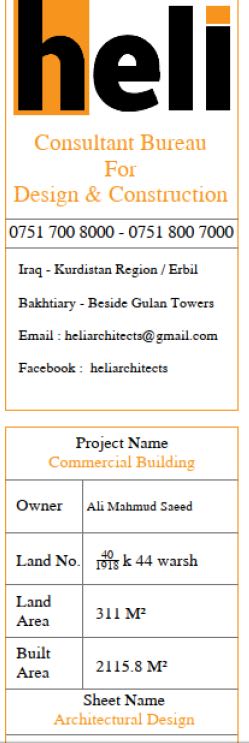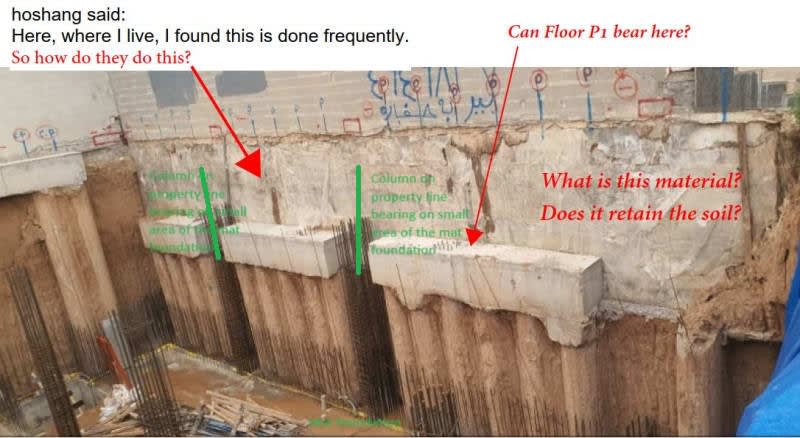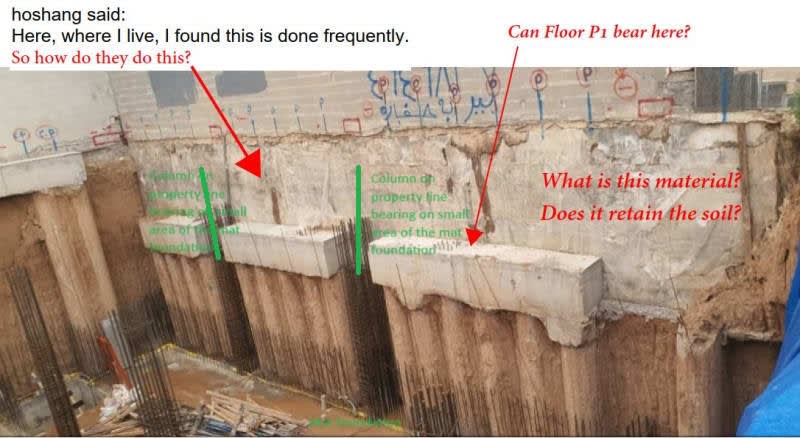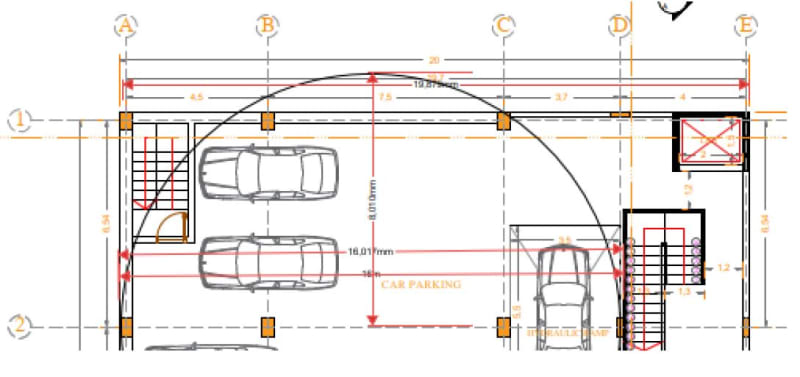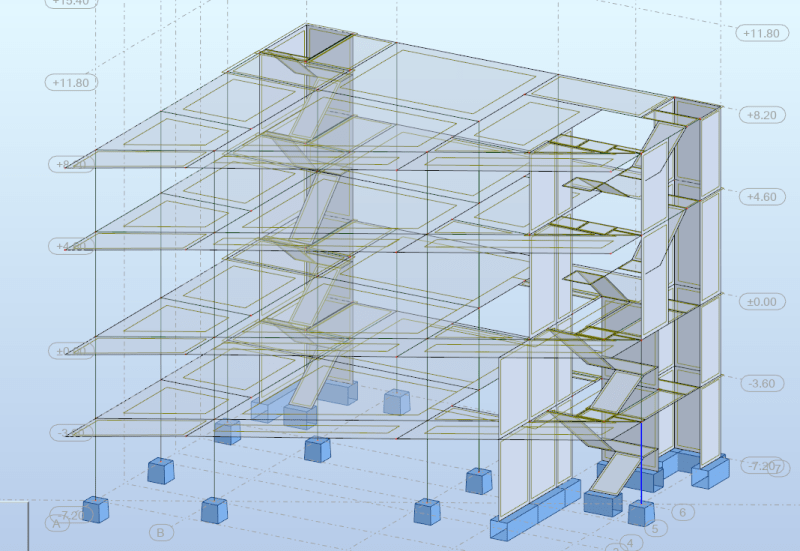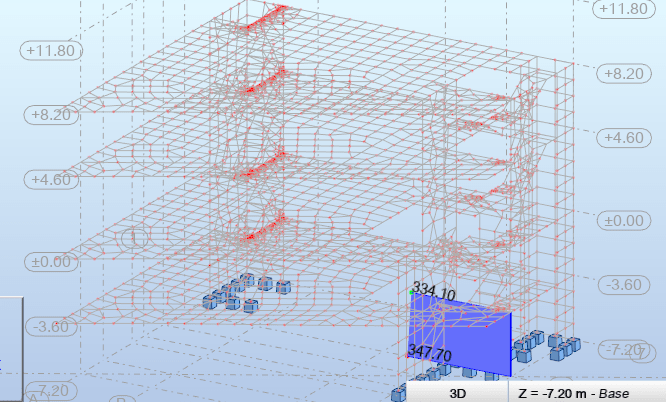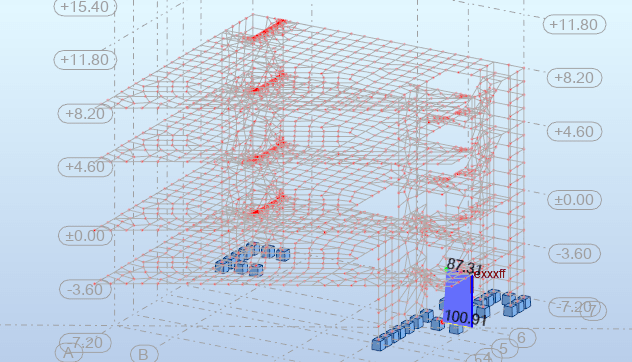Hi all,
please find the attached thread:
javascript penindex(450,450,'
penindex(450,450,'
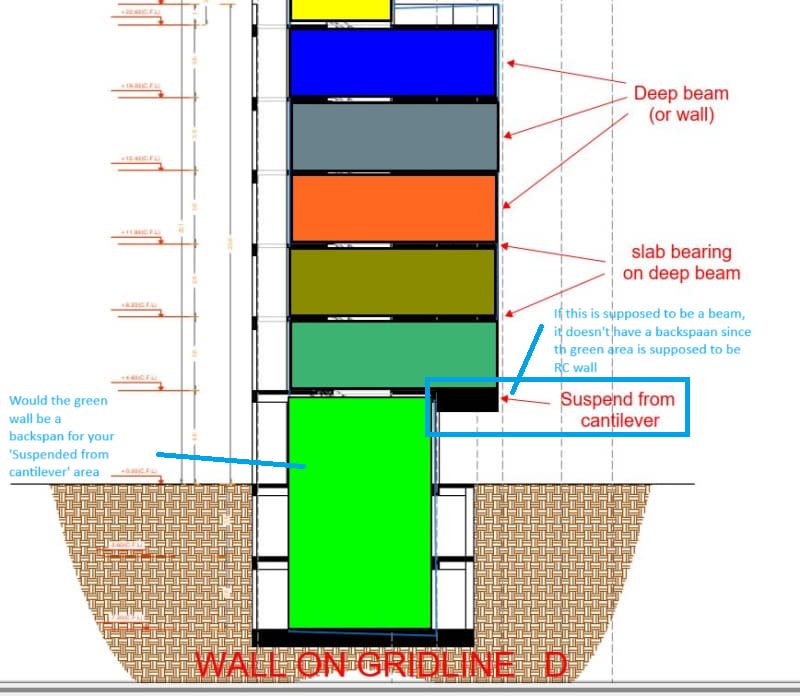
So the black object is hanging from the cantilevered wall above, does this mean the cantilevered wall above (the dark green one) is acting as a hanger for the cantilever slab below (the cantilever slab at level +4.60) at the same time it acts as bearing wall supporting the cantilever slab resting on it (the cantilever slab at level +8.20)? If so, how it can be modeled in an FEA software?
please find the attached thread:
javascript
BAretired said:There are no beams on gridlines D and E other than walls, acting as deep beams and shear walls combined.
BAretired said:The black object is hanging from the cantilevered wall above, which means that forms must be kept in place until the wall above cures.

So the black object is hanging from the cantilevered wall above, does this mean the cantilevered wall above (the dark green one) is acting as a hanger for the cantilever slab below (the cantilever slab at level +4.60) at the same time it acts as bearing wall supporting the cantilever slab resting on it (the cantilever slab at level +8.20)? If so, how it can be modeled in an FEA software?

